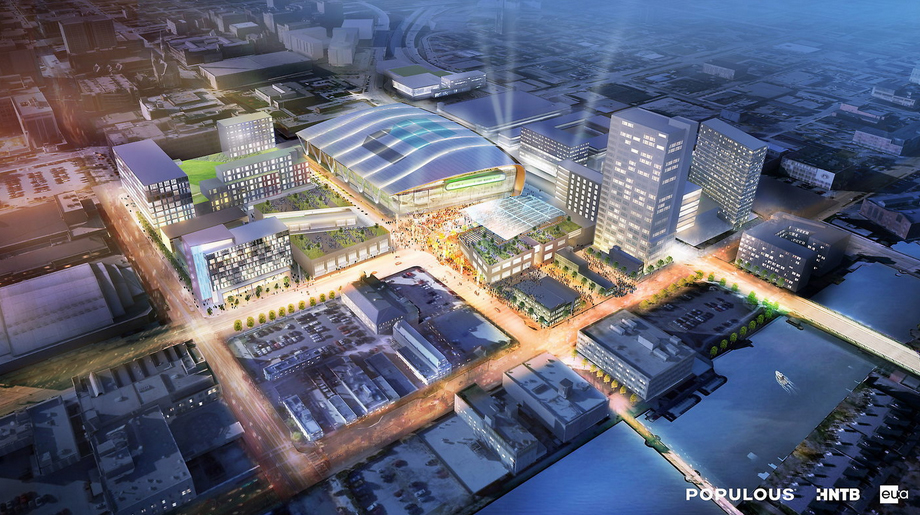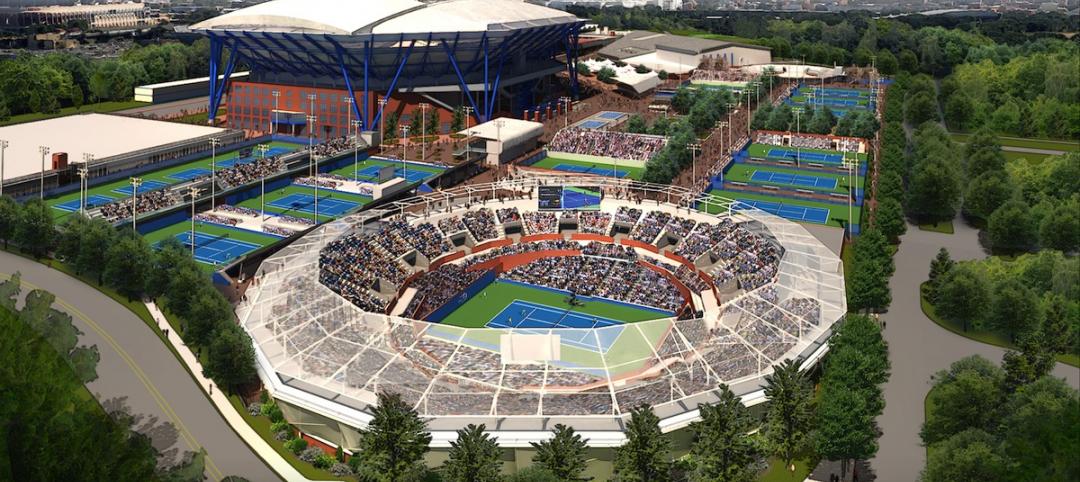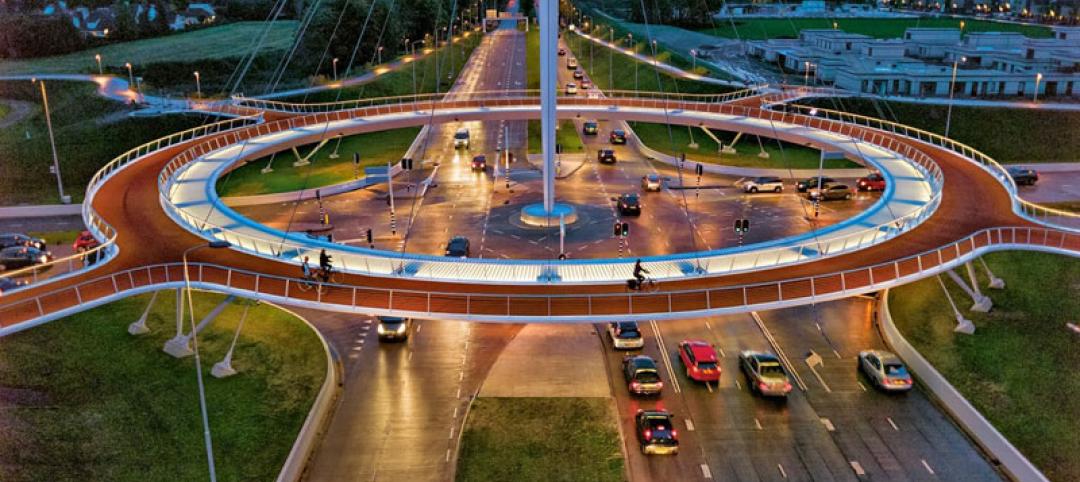The Milwaukee Bucks are one step closer to remaining in Wisconsin after the state voted this week in favor of spending $250 million in public funds on a new arena, according to ESPN.
BD+C has covered the proposed arena. Created by Milwaukee firm Eppstein Uhen Architects and global firm Populous, the venue will be built in downtown Milwaukee. Its design draws inspiration from both Lake Michigan, which borders Milwaukee, and from aspects of basketball, like high-arcing free throws. It is estimated to cost $500 million.
Funding a new arena has been an issue for the small market NBA team. Billionaires Wesley Edens and Marc Lasry purchased the Bucks in 2014 with the vow of keeping the team in the city. The NBA, however, said that the Bucks would need a new arena plan in place by 2017. Without a deal, the league would buy back the team and re-sell it, possibly to owners who would relocate it to either Seattle or Las Vegas.
Residents that opposed the arena plan cited the problems that arise when the government financially supports private sports entities, and referenced Miller Park. The Milwaukee Brewers' retractable roof stadium was publicly funded. Built in the late 1990s, it is still being paid off today.
The upside to a new arena is that the state still gets to recieve income tax from players and staff, and that the venue could bring new development, like entertainment and commercial spaces, residential buildings and parking facilities, to the area around the stadium. Most importantly, the state gets to keep the franchise that won the 1971 NBA Finals and currently has up-and-coming players like Jabari Parker and Giannis Antetokounmpo (and head coach Jason Kidd) on the roster.
The bill now heads to Governor Scott Walker for his signature. Walker has been working with state officials to reach a deal and is expected to sign it.
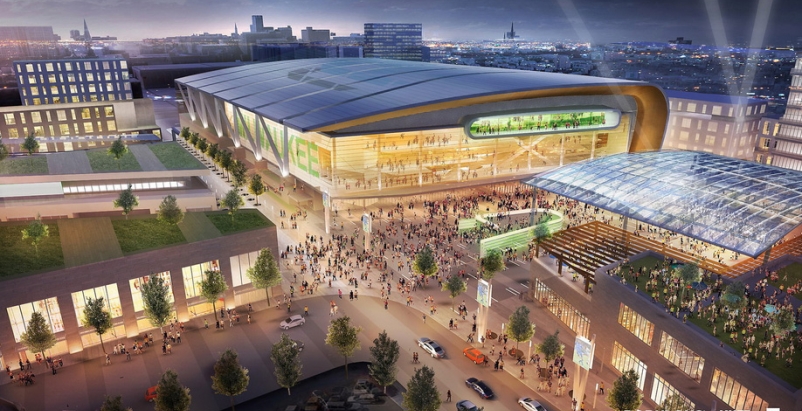
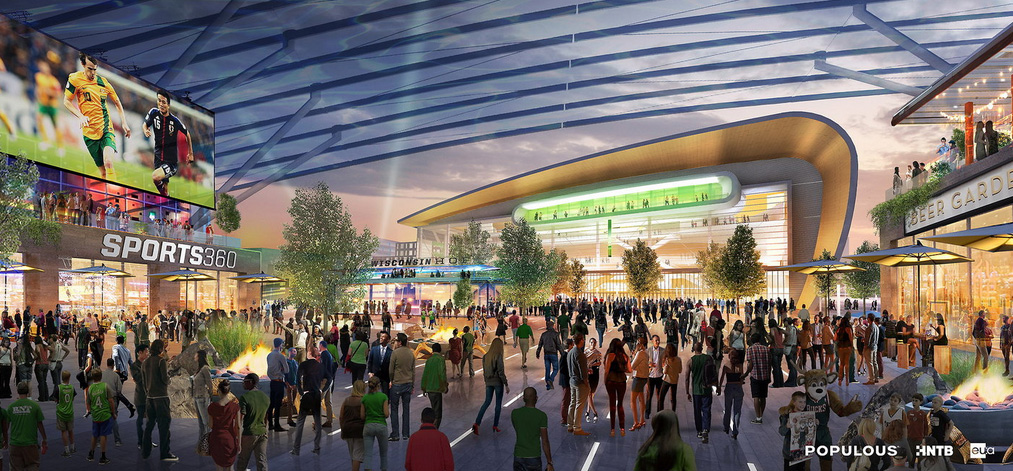
Related Stories
| Apr 2, 2014
8 tips for avoiding thermal bridges in window applications
Aligning thermal breaks and applying air barriers are among the top design and installation tricks recommended by building enclosure experts.
| Mar 26, 2014
Callison launches sustainable design tool with 84 proven strategies
Hybrid ventilation, nighttime cooling, and fuel cell technology are among the dozens of sustainable design techniques profiled by Callison on its new website, Matrix.Callison.com.
| Mar 25, 2014
Sydney breaks ground on its version of the High Line elevated park [slideshow]
The 500-meter-long park will feature bike paths, study pods, and outdoor workspaces.
| Mar 20, 2014
Common EIFS failures, and how to prevent them
Poor workmanship, impact damage, building movement, and incompatible or unsound substrate are among the major culprits of EIFS problems.
| Mar 13, 2014
Do you really 'always turn right'?
The first visitor center we designed was the Ernest F. Coe Visitor Center for the Everglades National Park in 1993. I remember it well for a variety of reasons, not the least of which was the ongoing dialogue we had with our retail consultant. He insisted that the gift shop be located on the right as one exited the visitor center because people “always turn right.”
| Mar 12, 2014
14 new ideas for doors and door hardware
From a high-tech classroom lockdown system to an impact-resistant wide-stile door line, BD+C editors present a collection of door and door hardware innovations.
| Feb 26, 2014
Billie Jean King National Tennis Center serving up three-phase expansion
The project includes the construction of two new stadiums and a retractable roof over the existing Arthur Ashe Stadium.
| Feb 14, 2014
First look: Kentucky's Rupp Arena to get re-clad as part of $310M makeover
Rupp Arena will get a 40-foot high glass façade and a new concourse, but will retain many of its iconic design elements.
| Feb 14, 2014
Crowdsourced Placemaking: How people will help shape architecture
The rise of mobile devices and social media, coupled with the use of advanced survey tools and interactive mapping apps, has created a powerful conduit through which Building Teams can capture real-time data on the public. For the first time, the masses can have a real say in how the built environment around them is formed—that is, if Building Teams are willing to listen.
| Feb 11, 2014
World's first suspended bicycle roundabout [slideshow]
Located in the Netherlands, the project was designed to promote a healthier lifestyle.


